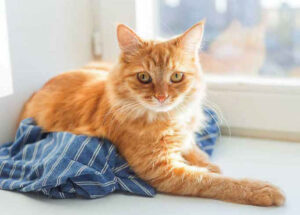Hairballs – Hiatus in happiness
Formation of hairballs is quite common in cats. It can pose a threat to their
health and as a pet parent, you should know about it. Read on to find the causes,
symptoms, and remedies of hairballs in cats.
Have you ever noticed your pet running and playing, and the next minute your feline friend suddenly bolts, extends its neck up and starts gagging or coughing. The next thing you know, your cat has vomited a slimy clumpy portion of mass. This is not just unpleasant for your cat but also for the person cleaning them up. Your pet has just vomited up a hairball which can pose to be a major risk for your pet’s health.
Just what are these hairballs
 Your cat has expelled a trichobezoar, often known as a hairball, which is a moist wad of undigested hair moistened by bile and other digestive fluids. Hairballs are usually one inch thick in general, but it can go up to 5 inches long and an inch thick.
Your cat has expelled a trichobezoar, often known as a hairball, which is a moist wad of undigested hair moistened by bile and other digestive fluids. Hairballs are usually one inch thick in general, but it can go up to 5 inches long and an inch thick.
What causes these hairballs?
When your pet grooms or licks herself, tiny spikes on her tongue catch loose and dead hair, which is then swallowed. Most of these hairs and fur will easily pass through the digestive tract, but if some hair is stuck in the stomach, it can clump up to form a hairball.
The hairball will then be regurgitated and vomited out by your pet. Hairball formation is more common in longhaired breeds like Persians and Maine Coons. Cats who shed a lot or groom themselves obsessively are more likely to get hairballs because they swallow a lot of fur. It usually occurs when they are adults (above 1 year) rather than when they are kittens. The formation of hairballs is more common during the shedding season when cats shed their coats (January to Mid-April).
Symptoms to lookout for
It’s a rather unsettling process to watch and hear your pet retch and cough up while eliminating the hairball. As soon as you observe this process it is recommended to take your pet to the vet for proper diagnosis and treatment. The other symptoms could also include constipation, diarrhea, and lethargy, along with loss of appetite.
Early diagnosis goes a long way
Physical examination, blood tests, radiography, and a history of the animal’s pattern of hairball regurgitation are used to diagnose intestinal blockages. If a blockage is discovered, surgery may be the only option to remove the hairball.
Therapy will center on protecting the intestines through several days of clinical care that includes intravenous rehydration and the use of pet safe laxatives to move the hairball through the digestive tract.
Rooting for remedies
- Get your pet accustomed to daily brushing and combing. It’s perfect for grooming and will strengthen your bond as well.
- Give your pet a specialized hairball formula cat food which is high on fiber.
- Distract your pet with fun and enjoyable activities so that it reduces excessive grooming by itself.
- Use of pet safe laxatives once in a while might reduce the formation of hairballs.
If you notice any of the above mentioned symptoms, seek medical help and trust your vet for the best treatment.
(Dr Adarsh J, Assistant Techno- Commercial & Product Manager, B.V.Sc & A.H-2018, M.V.Sc Animal Nutrition-2020)
– by Dr Adarsh J

